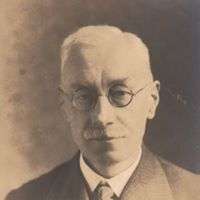George Cockshott
| George Cockshott | |
|---|---|
 | |
| Born |
May 17, 1875 Southport, Great Britain |
| Died |
1953 Hampshire, Great Britain |
| Residence | Former address: 3, Tulketh Street, Southport |
| Education | Uppingham and King’s College Cambridge |
| Occupation | Solicitor |
| Known for | Design 12 foot dinghy |
| Board member of | Vice-Commodore of Southport Corinthian Yacht Club |
| Notes | |
|
Member of: Royal Mersey Yacht Club, Southport Corinthian Yacht Club, West Lancashire Yacht Club, and Cambridge University Cruising Club | |
George Cockshott[1] (7 May 1875 in Southport – 1953 in Hampshire) was educated at Uppingham and King’s College Cambridge. He resided at Southport, and was Vice-Commodore of Southport Corinthian Yacht Club. As a boy he took a keen delight in building and sailing model yachts, and while at school built for himself a rowing and sailing boat. He joined the Cambridge University Sailing Club shortly after its formation in 1893. On coming down from Cambridge, he spent several seasons as ‘forward hand’ racing in the Southport ¾-rating class and the Menai Straits 1-rating class. He owned the Unona, a half decked centre board boat, and designed and sailed for two seasons a boat in a ‘restricted class’ of 12-foot dinghies with a fair measure of success. In 1901 he became owner of the 12 ton cutter Eurynome, a boat long famous as a cruiser-racer in Irish, Clyde and Welsh waters, and though Cockshott preferred cruising to racing, considerably reduced her spars and canvas, she was successfully raced under his flag for several seasons in a strong handicap class. In 1904, he again entered the ¾-rating class as part owner of Imp. He also ownedd the yacht is the Sthoreen, an able and comfortable cruising yawl of 16 tons, built from his own designs, and launched in the spring of 1906. Cockshott has also turned his attention to yacht architecture, and, in addition to his own yacht, one 20 tonner, several smaller yachts, and motor launches, and tender to the Southport lifeboat, have been built from his designs. He designed a new racing class for the West Lancashire Yacht Club from which six boats are now being built.
In 1912 Cockshott won a design competition for a small sailing and rowing dinghy.[2] The requirements for this dinghy were:
- an overall length of 12 feet,
- a beam of 4 feet 6 inches and
- a single sail of 100 square feet.
The hull was to be clinker, planked in spruce on bent timbers.[3] Cockshotts design became world wide known as the 12 foot dinghy. The design was granted an informal international status in 1914 and a formal one by IYRU in 1919.[4] In 1920 the 12 foot dinghy was used in the Summer Olympics as the first one design class.[5] Also the class was used as an Olympic class in 1928, Amsterdam.[6] The class 'International' status was revoked in 1964 by the IYRU.
Clubs: Royal Mersey Yacht Club, Southport Corinthian Yacht Club, West Lancashire Yacht Club, and Cambridge University Cruising Club.
References
- ↑ "George Cockshott". facebook.com. Retrieved 5 March 2018.
- ↑ "Classic Classes by Vanessa Bird". books.google.nl. Retrieved 5 March 2018.
- ↑ "history of the 12foot dinghy". 12footcwc.org. Retrieved 5 March 2018.
- ↑ "Vier scheepsbouwtekeningen van een twaalf-voets-jol" (in Dutch). Fries Scheepsvaart Museum. Retrieved 5 March 2018.
- ↑ "12 foot dinghy mixed". International Olympic Committee. Retrieved 5 March 2018.
- ↑ "12 foot dinghy individual mixed". International Olympic Committee. Retrieved 5 March 2018.